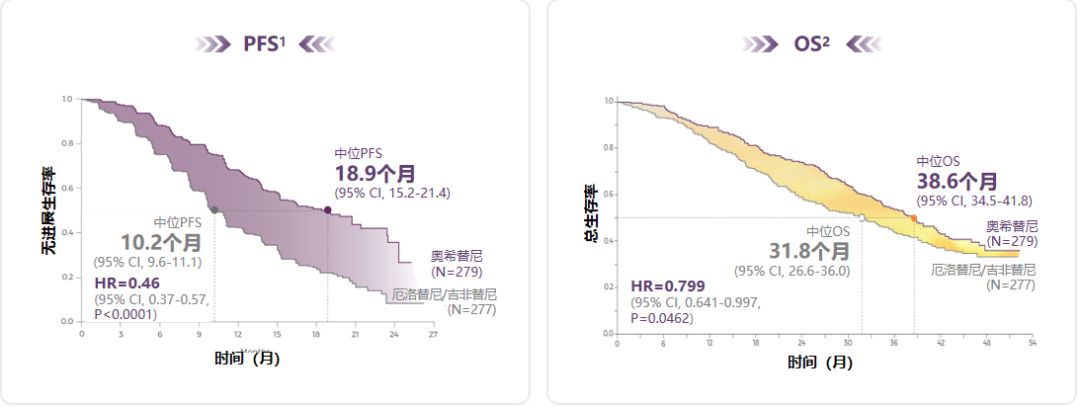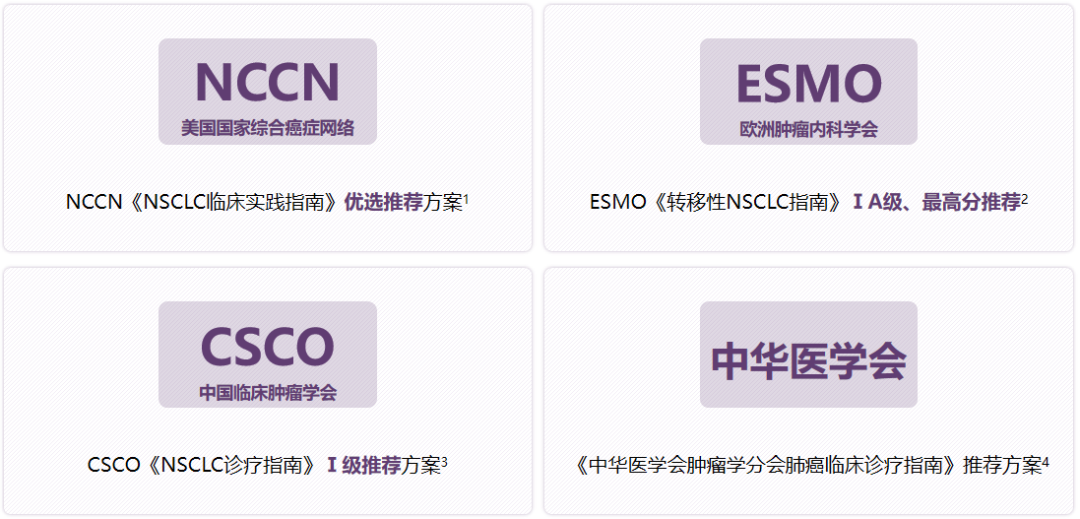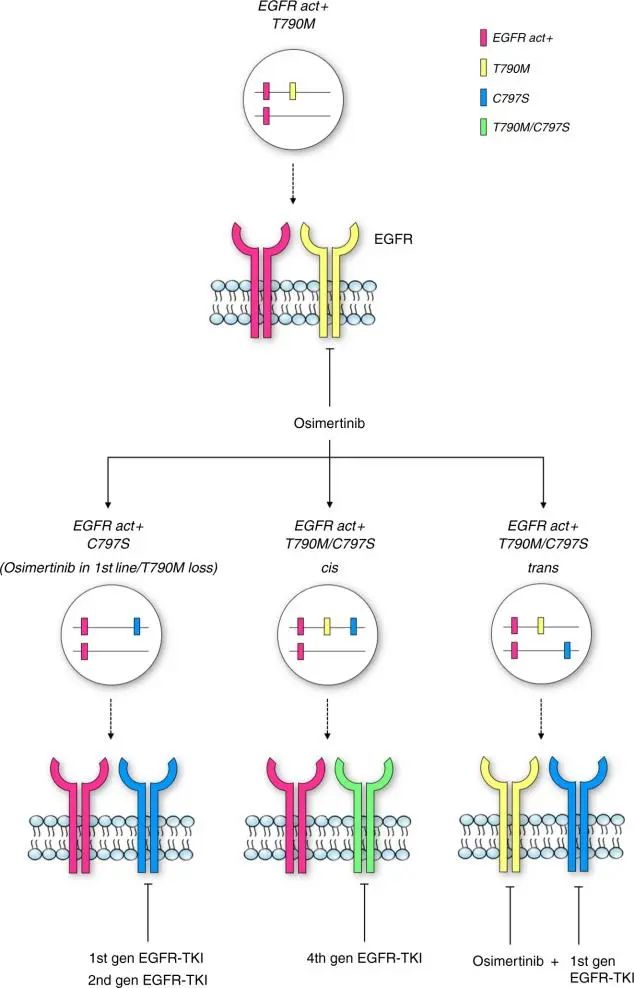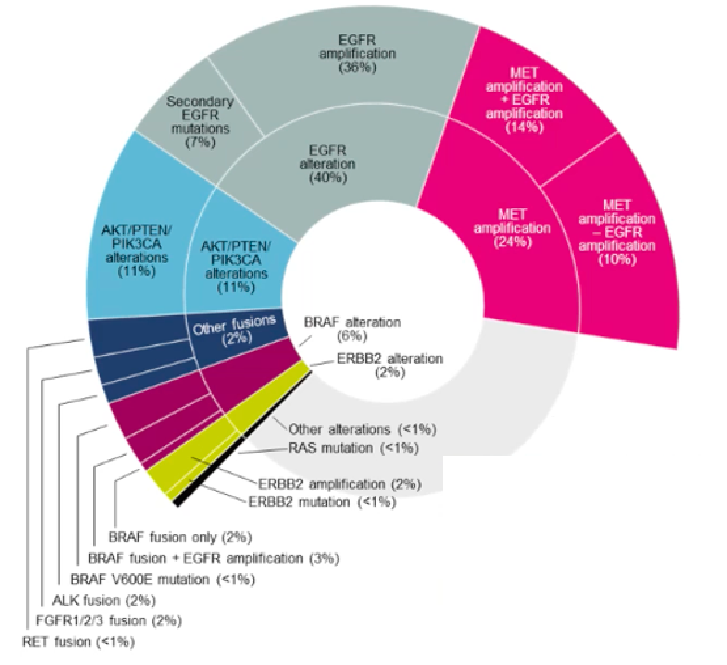Good medicine first, drug-resistant worry-free 丨 Oshitinib first-line drug resistance-C797S mutation response strategy
Author:Cancer Channel of the Medical Time:2022.09.10
*For medical professionals for reading reference

How to cope with Oshitininib related to C797S mutations? There is an answer here!
As the first third -generation tyrosine kinase inhibitor (TKI) that target EGFR mutations, Oshitinib has showing excellent curative effects and security in clinical research and real world. It is currently recognized as EGFR at home and abroad. The first -line treatment standard plan for mutant positive non -small cell lung cancer (NSCLC), many Chinese patients have obtained significant clinical benefits through treatment.
However, in clinical practice, there are still some patients who have not used Oshininib on the front line. One of the reasons is that clinic workers are worried that Oshitinib lacked a response strategy after treating drug resistance, so they are unwilling to "use good medicine first" Essence However, with the continuous deepening of the exploration of Osteini drug resistance mechanism, the academic community has found a variety of solutions to a drug -resistant mechanism. This article takes the common C797S mutations in the first -line treatment of Olkininib as an example to introduce the response to drug resistance to resist drug resistance. Strategy to eliminate clinical medication concerns.
The first -line treatment has a clear benefit, Osicinib is unable to shake the preferred status
Osicinib for Flaura research for the first-line NSCLC treatment, setting a benchmark for targeted therapy for the third-generation EGFR-TKI and even the entire EGFR mutation: The data released in 2018 (PFS) data showed that Osi The median PFS of patients in the treatment of patients reached 18.9 months, far exceeding the first-generation/second-generation EGFR-TKI. Since then In the first-line treatment, OS has an OS significant benefit EGFR-TKI [1-2] (Figure 1).

Figure 1. Osicinib PFS has a clear benefit and successfully extended the median OS of patients
At the same time as the overall effect is excellent, Ohitinib also shows a good intracranial efficacy in Flaura research. At the same time, the treatment of treatment is also significantly improved compared to the first generation of the control group. Therefore The National Comprehensive Cancer Network (NCCN), the European Cancer Internal Science Society (ESMO), and the China Clinical Oncology Society (CSCO) and other domestic and foreign authoritative guidelines recommended EGFR mutations positive NSCLC first -line therapy standard schemes (Figure 2).

FIG
However, even Oshitinib, which has excellent curative effect, will inevitably encounter treatment resistance, and unlike the first-generation/second-generation EGFR-TKI resistance mechanism concentrated in T790M mutations, Osidinib's resistance to resistance to resistance The mechanism is relatively scattered, and often needs to decide the subsequent treatment plan according to the results of the disease progress mode and the necessary biopsy when necessary. The C797S mutation is one of the more prominent drug -resistant mechanisms.
Before C797S mutations, you must first understand these knowledge
The C797S mutation is located on the outer sub -appendage No. 20 of EGFR. The cysteine residue of 797 sites at 797 sites is replaced by the serine. Causes treatment resistance. C797s mutations can be subdivided into three cases (Figure 3):
Simple C797S mutations are more common in the first line of Oshitinib for treatment;
The T790M/C797S cashier, that is, the T790M mutation and the C797S mutation are located on the same DNA chain;
T790M/C797S is transliterated, that is, two mutations are located on different DNA chains. Two types: custody and transcendence are more common in second -line treatment [3].

Figure 3.C797s mutations in three types
The incidence of mutations and drug resistance of C797S mutations after the first -line treatment of Oshitinib for different research reports is slightly different. [3]; In the clinical phase II ORChard Studies of the reporting data in 2022, the overall incidence of EGFR secondary mutations (C797X/L718X) containing C797S mutations was 7%(Figure 4) [4-5].

Figure 4. Osicinib first -line therapy mechanism and incidence of Oshitinib
At present, the fourth-generation EGFR-TKI, which is targeted at C797S mutations, has entered the R & D stage, and has initially demonstrated the ability to inhibit C797S mutations [6], but these drugs are obviously far away from clinical clinical. In order to dispel clinical workers' concerns about C797S mutations and use Oshitinib in "worry -free" in the first -line treatment, it is necessary to find a way to solve the C797S mutation from existing drugs. Fortunately, from the perspective of existing research results, we are not helpless at the current C797S mutation.
Different mutation mode solves, and accurate judgment can be effective
C797S mutations can be divided into three different cases. Therefore, mutations have different effects on the sensitivity effects of EGFR-TKI other than EGFR-TKI outside Oshitinib. You need to choose a response strategy based on the mutation type.
1
Simple C797S mutation
Existing studies have shown that the "simple C797S mutation" occurred after the first-line treatment of Oshitinib, because it does not occur at the same time as the T790M mutation, so the first generation/second-generation EGFR-TKI such as Geffitinib still has inhibitory effects on it [7].
2
T790M/C797S cash -type mutation
For T790M/C797S cashier or transliterate, the current reporting strategies are also different: T790M/C797S cashier mutation is not sensitive to the first/second-generation EGFR-TKI, but may be available in Xitu, which is targeted at EGFR Former monoclonal resistance. For example, a case reported by the Daping Hospital team of the Army Medical University, and the patient's PFS of PFS reached 9 months for the PFS of Cychen Mipide and ALK inhibitors. [8] There are also case reports and retrospective studies that anti-vascular production drugs may also have certain clinical value, which can be used in combination with Oshitinib or chemotherapy with Petonomy [9-10]. 3
T790M/C797S transliteration
For patients with T790M/C797S transformers, the model of Oshitinib+the first generation of EGFR-TKI can be used. +Elotinib for treatment, which briefly controlled the patient's condition, but then the patients have since turned the T790M/C797S transformer to a cashier [11]; another case report from the domestic case in 2021 also appeared in the report from the domestic case. Similar situations (after 8 months of combination), the treatment team switched to Alehitinib+Arotinib therapy again to relieve (last 9 months) [10].
Expert comment: C797S mutations are no longer helpless, clinicians can use Oshitinib at ease
The C797S mutation is one of the main drug-resistant mechanisms of Oshitinib first-line therapy for EGFR-positive NSCLC. It is also the cutting-edge exploration topic of EGFR targeted therapy. A variety of fourth-generation EGFR-TKIs all target C797S mutations. Most of the C797S mutations in the current report, mostly from case reports or retrospective studies, have indeed achieved a certain effect, so that clinic workers are no longer helpless about C797S mutations. , Pursue the longer -lasting condition control and better survival and quality of life.
Expert Introduction
Professor Wang Xiaohong

Harbin Medical University Affiliated Oncology Hospital Chief Physician Master of Tutor
Heilongjiang Provincial Healthcare International Exchange Promotion Association of Lung cancer prevention and standardized diagnosis and treatment
Deputy Chairman of the Branch
Member of the Professional Committee of Tumor Molecular A targeted therapy of the Society of Biomedical Engineering
member of Chinese medical society
Member of China Anti -Cancer Association
Executive Member of the Senior Cancer Professional Committee of Heilongjiang Province
Executive Member of Heilongjiang Medical Association Neurological Endocrine Tumor Professional Committee
Member of the Professional Committee of the Lung Cancer Professional Committee of the Heilongjiang Provincial Anti -Cancer Association
Member of the Heilongjiang Anti -Cancer Association Tumor Biological Treatment Committee
Member of the Lung Cancer Team of the Heilongjiang Anti -Cancer Association Tumor Transfer Professional Committee
references:
[1] .soria J C, OHE Y, VANSTEENKISTE J, et al. Osimertinib in Untreated EGFR-Mutated Advanced Non-Cell LUNG CANCER [J]. New England Journal of Medicine, 2018, 378 (2): 113-125: Then, then, then
[2] .ramalingam s s, vansteenkiste j, planchaard d, et al. Overall Survival with Osimertinib in Untreated, EGFR-MUTATED Advanced NSCLC [J]. New England Journ35, 32222, 202, 202, 202, 202, 202, 202, 202, 202, 202, 202, 202, 202, 202, 20, 202, 202, 202, 202, 202, 202, 202, 202, 202, 202, 202, 202, 202, 202, 202, 202, 202, 202, 202, 202, 202, 202, 202, 202, 202, 202, 202, 202, 202, 202, 202, 202, 202, 202, 202, 202, 202, 202, 202, 202,, 302, 202,.
[3]. Leonetti A, Sharma S, Minari R, Et Al. Resistance Mechanisms to Osimertinib in EGFR-Mutated Non-Small Cell LUNG CANCER [J]. British Journal of Cancer, 2019, 121 (9): 725-737.
[4].Hartmaier R J, Markovets A, Cho B C, et al. Abstract LB078: Tumor genomics in patients (pts) with advanced epidermal growth factor receptor mutant (EGFRm) non-small cell lung cancer (NSCLC) whose disease has progressed on first-line (1L) osimertinib therapy in the Phase II ORCHARD study[J]. Cancer Research, 2022, 82(12_Supplement): LB078.[5].Ramalingam S S, Cheng Y, Zhou C, et al. Mechanisms of acquired resistance To First-Line Osimertinib: Preliminary Data from the Phase III Flaura Study [J]. Annals of oncology, 2018, 29 (S8): viii740.
[6] .zhao h y, xi x x, xin m, et al. Overcoming C797s Mutation: The Challenges and Prospects of the FourTh-Generation EgFR-TKIS [J]. Bioorganic Chemistry, 2022: 106057.
[7] .bertoli e, de carlo e, del conte a, et al. Acquired Resistance to Osimertinib in EGFR-mutated non-Small Cell LUNG CANCER: How do we overcom it? [J]. Internet , 23 (13): 6936.
[8].Wang Y, Han R, Zhu M, et al. Case Report: Durable Response to the Combination of Brigatinib and Cetuximab Plus Icotinib in a NSCLC Patient Harboring EGFR L858R-T790M-cis-G796S and L718Q Resistance Mutations Following Progression With Osimertinib [J]. Frontiers in onCology, 2022: 2022.878513.
[9].Yang Y, Xu H, Ma L, et al. Possibility of brigatinib‐based therapy, or chemotherapy plus anti‐angiogenic treatment after resistance of osimertinib harboring EGFR T790M‐cis‐C797S mutations in lung adenocarcinoma patients[J]. Cancer Medicine, 2021, 10 (23): 8328-8337.
[10].Zhou R, Song L, Zhang W, et al. Combination of osimertinib and anlotinib may overcome the resistance mediated by in cis EGFR T790M-C797S in NSCLC: a case report[J]. OncoTargets and Therapy, 2021, 14 : 2847.
Thoracic Oncology, 2017, 12 (11): 1723-1727.*This article is only used to provide scientific information to medical persons and does not represent the viewpoint of this platform


- END -
In summer, cerebral infarction is still high incidence, preventing prevention cannot be ignored

The heat is hot, the human body sweats a lot, and the water evaporates fast. Howev...
[I do practical things for the masses] Langfang Maternal Maternal and Child Health Hospital should d
